On a Tuesday afternoon at American University, at the foot of a sloping staircase, a large meeting room designed to accommodate dozens of people was occupied by only a handful of individuals.
They convened to discuss a question the university announced it would begin assessing almost exactly a year ago: should American University campus police officers be armed or equipped with more enhanced weaponry?
An October 2023 letter from the university’s Chief Financial Officer, Bronté Burleigh-Jones, explained the school would be reassessing the weapons available to campus officers following a shooting at Morgan State University in Baltimore.
The first three sessions were intended to host only staff, faculty and students, respectively, in favor of arming the officers or enhancing the options of weapons available to them. Future sessions, starting today, are designed for staff, faculty and students against the change in practice.
Burleigh-Jones explained the goal of this format was, with such sensitive subject matter, to make as many campus residents as possible feel comfortable sharing their opinions.
“People need to feel safe to talk about it,” she said. “There are students who won’t talk freely in front of faculty and staff. There are staff who will not talk freely in front of faculty. We don’t want this to be a debate.”
The first October community forum we attended was the beginning of a sequence of events designed to solicit community feedback from staff, faculty and students at American. The meetings were organized so only like-minded people were speaking to each other.
Of the small group in the meeting room, only one person was a staff member there to voice an opinion. The rest were part of the team organizing the feedback effort.
Sam Sadow, visual resources curator at the Katzen Arts Center, was strongly against arming campus officers, but he was unable to make it to the anti-enhancing weapons event so he came to this one instead to share his thoughts.
Organizers clicked through slides with discussion questions and listened intently as he conveyed his concerns.
“In my own experience, guns add a level of menace and threat that is just unavoidable,” said Sadow, who is also an elected representative of the AU staff union.
He and colleagues he’s heard from worry the guns would be used to hurt students, but, even short of that, he’s concerned just the presence of guns in holsters would change the campus climate and strike fear into the young adults that populate the university.
“I think the real threat of violence and harm is one thing,” Sadow said, but having armed officers could also “chill activism on campus, chill free expression on campus.”
“They’re students and shouting at a cop that’s unarmed is a lot different than shouting at a cop that is armed and I want them to be able to shout at cops,” he added.
The assistant vice president of university police services, Phillip Morse, explained that the department is currently trained to, in every way possible, reduce violence.
“We train deescalation so we do not train aggressive tactics,” Morse said. “Deescalation, deescalation, deesecalation. That’s everything we do starts with that.”
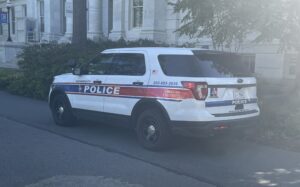
The following day, a large campus community space was again occupied by the same handful of organizers and a singular campus community member present to offer an opinion. Though the afternoon was designed to attract faculty members in favor of providing the officers more enhanced weaponry, this sole attendee, was, again, anti. He simply wasn’t aware the forums were organized by opinion, he said.
William Brent, a performing arts faculty member who teaches audio technology at American, has seen one too many horrific news stories to view guns as a good addition to campus.
“That kind of escalation could lead to a tragic outcome involving a firearm where it really wasn’t necessary,” Brent said. “That’s what I worry about the most.”
Over his 14 years on campus, the school has become his and his children’s home. The university community’s safety is paramount for him. He’s not convinced arming officers would better protect the school but imagines how it could do the opposite.
“A lot of people I care about are here,” said Brent, the only person sitting in the right half of the window-lined conference room.
The final session of the week was designed for students in favor of changing the practice around arming officers and adding more sophisticated weapons to their arsenals. This one was better attended, but the majority of the participants were, again, anti-arming officers, according to Joey Katzenell, an undergraduate student and March for Our Lives member. Most of the students had come with Katzenell, they said.
During the event, other students with March for Our Lives sat on the other side of the meeting room’s glass walls handing out pamphlets featuring gun violence statistics and a list of student organizations that had come out against the change in practice.
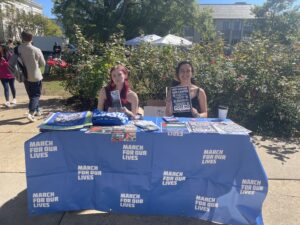
“More guns doesn’t mean less gun violence,” Katzenell said. “I think it poses a huge threat to students, especially Black and brown students, especially disabled students.”
Katzenell and Sadow expressed concerns about not just the issue of arming officers but the way the university was conducting the project.
“Where’s the problem that this is trying to solve?” Sadow asked.
According to Burleigh-Jones the question originated with a member of the Board of Trustees who inquired about the school’s procedure in the event of an active shooter on campus. The university’s 23-member Board of Trustees is primarily composed of people based outside of Washington D.C. and with work experience in education, media and weapons manufacturing.
The policy around the use of weapons for campus police had not been assessed recently, Burleigh-Jones, so it seemed time to look into it and worth investigating all options in the process.
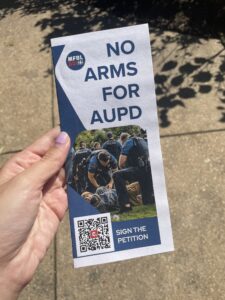
“That’s when we took a look at, ‘What is our current practice? What are the spectrum of practices? Let’s do an examination,’” Burleigh-Jones said. “Why would we take on the question and not consider the full spectrum?”
After the shooting at Morgan State, the Baltimore university announced it would have armed campus security around the residence hall near the scene of the incident.
George Washington University recently completed arming top officers. According to the school’s website, it announced it would receive community feedback on the topic in the spring of 2023 and started implementation around August of that year.
Katzenell said the thoroughness and length of American’s process, which has now surpassed a year, gives them confidence that the school is trying to go about this in the most transparent way possible.
However, the lack of dialogue across viewpoints worries Katzenell.
“If we had a forum where we could all just communicate and talk about what we think is right or wrong we could at least see where the other one was coming from,” Katzenell said.
In addition to the pro and anti events, the university has upcoming one for campus members “on the fence” about amping up weaponry for campus police and a forum for “impacted communities.”
Community forums will conclude Thursday, Oct. 17. After that will come a survey. Happening concurrently with all the steps so far, a feasibility study is being compiled which will, in addition to the feedback collected, inform a draft report sent to campus leadership. The process will end with a decision by the board and campus community.
Though Sadow and Katzenell appreciate the time and attention being given to collecting community feedback, they’re unsure it will be carried through all the way to the decision.
“We never interact with the Board of Trustees. They’re not in these forums. They are not available to talk to. It is almost impossible to reach them. I have no way of having faith that they’re going to listen to us,” Katzenell said. “Why do they need this privacy so bad that they want the community to investigate it but they don’t want to be part of the conversation?”
Sadow expressed the same uncertainty about how this all ends.
“That’s my concern and it’s not assuaged by that like nice, thought out community study process and the just ‘decision’ basically,” he said.
The Board of Trustees did not return a request for comment.
Burleigh-Jones said she hopes to bring the findings to the board in February.
“The level of thoughtfulness that has gone into this project, when it is all said and done, I know that we will all be proud of,” Burleigh-Jones said.
Upcoming community forums are scheduled periodically over the next two weeks.

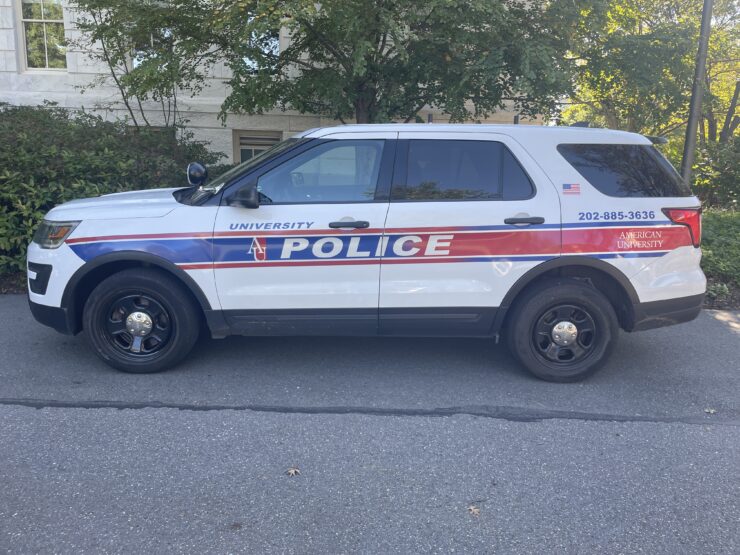
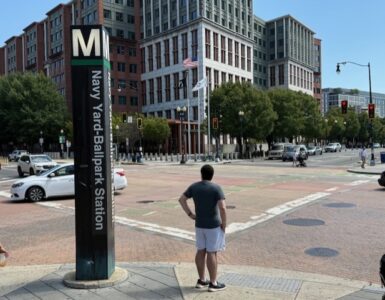

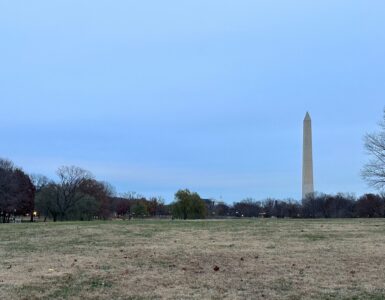










Add comment